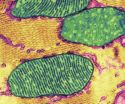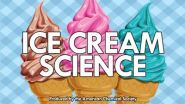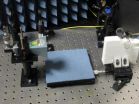(Press-News.org) In a further test of a novel theory that suggests autism is the consequence of abnormal cell communication, researchers at the University of California, San Diego School of Medicine report that an almost century-old drug approved for treating sleeping sickness also restores normal cellular signaling in a mouse model of autism, reversing symptoms of the neurological disorder in animals that were the human biological age equivalent of 30 years old.
The findings, published in the June 17, 2014 online issue of Translational Psychiatry, follow up on similar research published last year by senior author Robert K. Naviaux, MD, PhD, professor of medicine, pediatrics and pathology, and colleagues.
Naviaux said the findings fit neatly with the idea that autism is caused by a multitude of interconnected factors: "Twenty percent of the known factors associated with autism are genetic, but most are not. It's wrong to think of genes and the environment as separate and independent factors. Genes and environmental factors interact. The net result of this interaction is metabolism."
Naviaux, who is co-director of the Mitochondrial and Metabolic Disease Center at UC San Diego, said one of the universal symptoms of autism is metabolic disturbances. "Cells have a halo of metabolites (small molecules involved in metabolism, the set of chemical processes that maintain life) and nucleotides surrounding them. These create a sort of chemical glow that broadcasts the state of health of the cell."
Cells threatened or damaged by microbes, such as viruses or bacteria, or by physical forces or by chemicals, such as pollutants, react defensively, a part of the normal immune response, Naviaux said. Their membranes stiffen. Internal metabolic processes are altered, most notably mitochondria – the cells' critical "power plants." And communications between cells are dramatically reduced. This is the "cell danger response," said Naviaux, and if it persists, the result can be lasting, diverse impairment. If it occurs during childhood, for example, neurodevelopment is delayed.
"Cells behave like countries at war," said Naviaux. "When a threat begins, they harden their borders. They don't trust their neighbors. But without constant communication with the outside, cells begin to function differently. In the case of neurons, it might be by making fewer or too many connections. One way to look at this related to autism is this: When cells stop talking to each other, children stop talking."
Naviaux and colleagues have focused on a cellular signaling system linked to both mitochondrial function and to the cell's innate immune function. Specifically, they have zeroed in on the role of nucleotides like adenosine triphosphate (ATP) and other signaling mitokines – molecules generated by distressed mitochondria. These mitokines have separate metabolic functions outside of the cell where they bind to and regulate receptors present on every cell of the body. Nineteen types of so-called purinergic receptors are known to be stimulated by these extracellular nucleotides, and the receptors are known to control a broad range of biological characteristics with relevance to autism, such as impaired language and social skills.
In their latest work, Naviaux again tested the effect of suramin, a well-known inhibitor of purinergic signaling that was first synthesized in 1916 and is used to treat trypanosomiasis or African sleeping sickness, a parasitic disease. They found that suramin blocked the extracellular signaling pathway used by ATP and other mitokines in a mouse model of autism spectrum disorder (ASD), ending the cell danger response and related inflammation. Cells subsequently began behaving normally and autism-like behaviors and metabolism in the mice were corrected.
However, the biological and behavioral benefits of suramin were not permanent, nor preventive. A single dose remained effective in the mice for about five weeks, and then washed out. Moreover, suramin cannot be taken long-term since it can result in anemia and adrenal gland dysfunction.
Still, Naviaux said these and earlier findings are sufficiently encouraging to soon launch a small phase 1 clinical trial with children who have ASD. He expects the trial to begin later this year.
"Obviously correcting abnormalities in a mouse is a long way from a cure in humans, but we think this approach – antipurinergic therapy – is a new and fresh way to think about and address the challenge of autism.
"Our work doesn't contradict what others have discovered or done. It's another perspective. Our idea is that this kind of treatment – eliminating a basic, underlying metabolic dysfunction – removes a hurdle that might make other non-drug behavioral and developmental therapies of autism more effective. The discovery that a single dose of medicine can fundamentally reset metabolism for weeks means that newer and safer drugs might not need to be given chronically. Members of this new class of medicines might need to be given only intermittently during sensitive developmental windows to unblock metabolism and permit improved development in response to many kinds of behavioral and occupational therapies, and to natural play."
INFORMATION:
Co-authors are Jane C. Naviaux, Michael A. Schuchbauer and Susan B. Powell of the UCSD Department of Psychiatry; Kefeng Li and Lin Wang, UCSD Mitochondrial and Metabolic Disease Center and UCSD Department of Medicine; and Victoria B. Risbrough, UCSD Department of Psychiatry and San Diego Veterans Affairs Center for Excellence in Stress and Mental Health.
Funding for this research came, in part, from the Jane Botsford Johnson Foundation, the National Institutes of Health (grant MH091407), the UCSD Christini Fund, the Wright Family Foundation and the It Takes Guts Foundation.
Single dose reverses autism-like symptoms in mice
Old drug used for sleeping sickness may point to new treatment in humans
2014-06-17
ELSE PRESS RELEASES FROM THIS DATE:
Breast cancer diagnosis, mammography improved by considering patient risk: INFORMS paper
2014-06-17
A new approach to examining mammograms that takes into account a woman's health risk profile would reduce the number of cancer instances missed and also cut the number of false positives, according to a paper being presented at a conference of the Institute for Operations Research and the Management Sciences (INFORMS).
Mehmet U.S. Ayvaci of the University of Texas Dallas will present his research group's findings about the role of risk profiling in the interpretation of mammograms at Advances in Decision Analysis, a conference sponsored by the INFORMS Decision Analysis ...
Boost for dopamine packaging protects brain in Parkinson's model
2014-06-17
Researchers from Emory's Rollins School of Public Health discovered that an increase in the protein that helps store dopamine, a critical brain chemical, led to enhanced dopamine neurotransmission and protection from a Parkinson's disease-related neurotoxin in mice.
Dopamine and related neurotransmitters are stored in small storage packages called vesicles by the vesicular monoamine transporter (VMAT2). When released from these packages dopamine can help regulate movement, pleasure, and emotional response. Low dopamine levels are associated with neurodegenerative diseases ...
Gut bacteria predict survival after stem cell transplant, study shows
2014-06-17
(WASHINGTON, June 17, 2014) – New research, published online today in Blood, the Journal of the American Society of Hematology, suggests that the diversity of bacteria in the gastrointestinal tract of patients receiving stem cell transplants may be an important predictor of their post-transplant survival.
A healthy gastrointestinal tract contains a balanced community of microorganisms (known as microbiota), largely comprised of "friendly" bacteria that aid digestion and are important to immune system function. When this community of microbes is compromised, the microbiota ...
Ice cream chemistry: The inside scoop on a classic summer treat (video)
2014-06-17
WASHINGTON, June 17, 2014 — The summer weather is here, and if you've been out in the sun, you're probably craving some ice cream to cool off. In the American Chemical Society's latest Reactions video, American University Assistant Professor Matt Hartings, Ph.D., breaks down the chemistry of this favorite frozen treat, including what makes ice cream creamy or crunchy, and why it is so sweet. The video is available at http://youtu.be/-rlapUkWCSM
INFORMATION:
Subscribe to the series at Reactions YouTube, and follow us on Twitter @ACSreactions to be the first to see our ...
Climate change deflecting attention from biodiversity loss
2014-06-17
New research from the University of Kent suggests that recent high levels of media coverage for climate change may have deflected attention and funding from biodiversity loss.
In a paper published by the journal Bioscience, Kent conservationists also recommend that, to prevent biodiversity from becoming a declining priority, conservationists need to leverage the importance of climate change to obtain more funds and draw attention to other research areas such as biodiversity conservation.
For the study, the team conducted a content analysis of newspaper coverage in ...
Crowdsourcing the phase problem
2014-06-17
Compared with humans, computers have the capacity to solve problems at much greater speed. There are many problems, however, where computational speed alone is insufficient to find a correct or optimal solution, for example because the parameter "space" cannot be fully searched in a practical time. In contrast, the human mind can formulate expert knowledge specific for particular problems, providing a capacity to guide more efficient searches, although with more limited processing speed.
The power of the human contribution can be multiplied through the efforts of a greater ...
Genetic pathway can slow spread of ovarian cancer
2014-06-17
University of Adelaide research into the origins of ovarian cancer has led to the discovery of a genetic pathway that could slow the spread of the cancer.
The discovery is in part due to research into the genetics of humans' most distant mammalian relative, the platypus.
In a paper published today in the journal PLOS ONE, researchers characterize a genetic pathway – involving piRNA genes – that is turned on in ovarian cancer.
"This pathway is important for the development of the ovaries in drosophila flies but little is known about its role in the mammalian ovary," ...
NIST technique could make sub-wavelength images at radio frequencies
2014-06-17
Imaging and mapping of electric fields at radio frequencies (RF)* currently requires the use of metallic structures such as dipoles, probes and reference antennas. To make such measurements efficiently, the size of these structures needs to be on the order of the wavelength of the RF fields to be mapped. This poses practical limitations on the smallest features that can be measured.
New theoretical and experimental work by researchers at the National Institute of Standards and Technology (NIST) and the University of Michigan suggests an innovative method to overcome ...
Overweight + gene mutation = elevated liver values in children
2014-06-17
A study carried out at the Institute of Biomedicine of the University of Eastern Finland shows that a common mutation in the PNPLA3 gene combined with overweight results in elevated ALAT values in children. The ALAT value is an indicator of liver metabolism. In adults, this gene mutation is known to promote the accumulation of fat in the liver. The new results indicate that a healthy lifestyle is important already in childhood in order to prevent the accumulation of fat in the liver, and it is especially important for those carrying the risk gene. The results will be published ...
Brazilian surgeons review experience with soccer-related facial fractures for PRS-GO
2014-06-17
June 17,2014- Fractures of the nose and other facial bones are a relatively common and potentially serious injury in soccer players, reports a Brazilian study in Plastic and Reconstructive Surgery—Global Open® , the official open-access medical journal of the American Society of Plastic Surgeons (ASPS).
On the eve of the 2014 World Cup, a group of Brazilian plastic surgeons review their experience with soccer-related facial fractures requiring surgery. Dr. Dov Charles Goldenberg, MD, PhD, of University of São Paulo and colleagues write, "Due to exposure and the lack ...
LAST 30 PRESS RELEASES:
Manta rays create mobile ecosystems, study finds
Study: Mixed results in using lipoic acid to treat progressive multiple sclerosis
Norbert Holtkamp appointed director of Fermi National Accelerator Laboratory
New agentic AI platform accelerates advanced optics design
Biologists discover neurons use physical signals — not electricity — to stabilize communication
Researchers discover that a hormone can access the brain by hitchhiking
University of Oklahoma researcher awarded funding to pursue AI-powered material design
Exploring how the visual system recovers following injury
Support for parents with infants at pediatric check-ups leads to better reading and math skills in elementary school
Kids’ behavioral health is a growing share of family health costs
Day & night: Cancer disrupts the brain’s natural rhythm
COVID-19 vaccination significantly reduces risk to pregnant women and baby
The role of vaccination in maternal and perinatal outcomes associated with COVID-19 in pregnancy
Mayo Clinic smartwatch system helps parents shorten and defuse children's severe tantrums early
Behavioral health spending spikes to 40% of all children’s health expenditures, nearly doubling in a decade
Digital cognitive behavioral treatment for generalized anxiety disorder
Expenditures for pediatric behavioral health care over time and estimated family financial burden
Air conditioning in nursing homes and mortality during extreme heat
The Alps to lose a record number of glaciers in the next decade
What makes a good proton conductor?
New science reporting guide published for journalists in Bulgaria
New international study reveals major survival gaps among children with cancer
New science reporting guide published for journalists in Turkey
Scientists develop a smarter mRNA therapy that knows which cells to target
Neuroanatomy-informed brain–machine hybrid intelligence for robust acoustic target detection
Eight SwRI hydrogen projects funded by ENERGYWERX
The Lundquist Institute and its start-up company Vitalex Biosciences Announces Strategic Advancement of Second-Generation fungal Vaccine VXV-01 through Phase 1 Trials under $40 Million Competitive Con
Fine particles in pollution are associated with early signs of autoimmune disease
Review article | Towards a Global Ground-Based Earth Observatory (GGBEO): Leveraging existing systems and networks
Penn and UMich create world’s smallest programmable, autonomous robots
[Press-News.org] Single dose reverses autism-like symptoms in miceOld drug used for sleeping sickness may point to new treatment in humans



